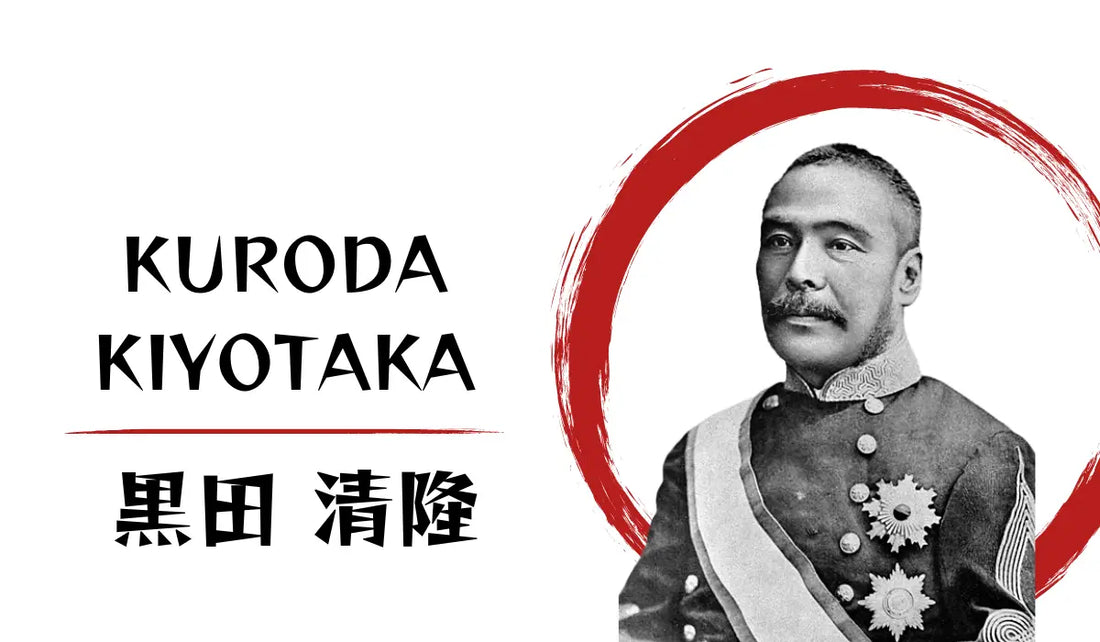
Kuroda Kiyotaka
Share
Duke Kuroda Kiyotaka (黒田 清隆 October 16, 1840 - August 23, 1900), also known as Kuroda Ryōsuke (黒田 了介, was a Japanese politician of the Meiji era and second Prime Minister of Japan from April 30, 1888 to October 25, 1889.
Kuroda Kiyotaka Early life
He was born into a samurai family serving the daimyō of the Shimazu clan in the town of Kagoshima on the island of Kyushu.
In 1862, Kuroda was involved in the Namamugi Incident, where Satsuma samurai killed a British man who refused to stop at the daimyō's procession. This led to the Anglo-Satsuma War in 1863, where Kuroda played a major role. After the war, he went to Edo, where he would study artillery.
Upon returning to Satsuma, Kuroda became an active member of the Satchō (Satsuma-Chōshū) alliance, which sought the overthrow of the Tokugawa shogunate.
He was later a military leader in the Boshin War, and became famous for defeating Enomoto Takeaki, who had faced Kuroda at the Battle of Hakodate, years later, and due to the impression made in combat, Kuroda asks for the life of Enomoto who had been imprisoned to be spared.
Kuroda Kiyotaka Political career
After the establishment of the Meiji government, Kuroda became a diplomat dealing with the Karafuto issue, a territory claimed by Japan and the Russian Empire in 1870.
Nervous about Russian expansion to the east, Kuroda returned to Tokyo and called for the rapid establishment of a Japanese settlement in that region. In 1871 he traveled to Europe and the United States for five months and after his return to Japan in 1872, he was in charge of the settlement of Hokkaidō.
In 1874 he was appointed director of the Hokkaidō Colonization Bureau, and organized a military-colonialist type settlement plan on the island in the company of ex-samurai and retired soldiers who could work as farmers and local military forces.
He was later promoted to major general in the Imperial Japanese Army. Kuroda invited agricultural experts from other countries (o-yatoi gaikokujin) that had a similar climate to Hokkaido, and with them learned successful harvesting and production methods in that terrain.
Kuroda Kiyotaka Signing of the Treaty of Ganghwa in 1876.
Kuroda traveled to Korea in 1875 and negotiated the Treaty of Ganghwa in 1876. Then in 1877 he was sent as part of the force that would suppress the Satsuma Rebellion. In 1878, he became leader of the Satsuma han, following the assassination of Ōkubo Toshimichi.
Shortly before leaving office in Hokkaido, Kuroda became the central figure in the Hokkaidō Colonization Office scandal in 1881.
He was appointed minister of agriculture and commerce in 1887.
Kuroda Kiyotaka as Prime Minister
He became the second Prime Minister of Japan, following Itō Hirobumi in 1881. During his administration, he coordinated the promulgation of the Meiji Constitution; however, he was involved in the unequal treaties controversy, he had to resign in 1889 after the publication of the proposal by his foreign minister Okuma Shigenobu.
Kuroda Kiyotaka Final years
He served as Minister of Communications in 1892, in the second Itō cabinet. In 1895 he became a genrō, and chairman of the Privy Council. He died of a cerebral hemorrhage in 1900.

